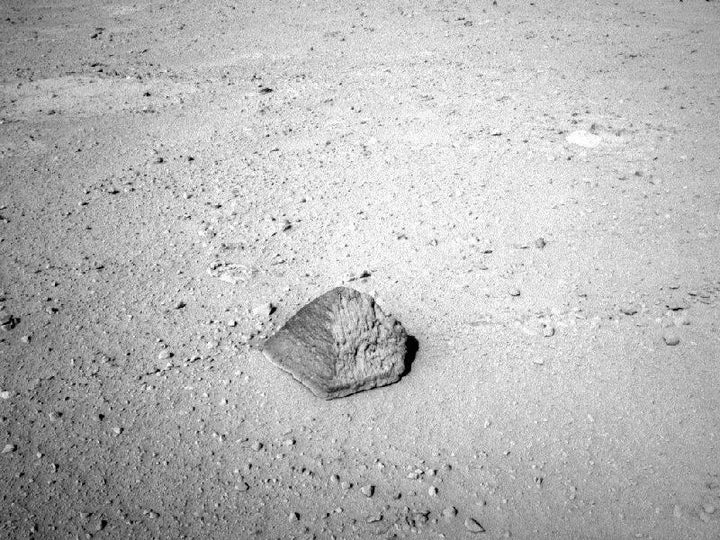
Curiosity's robotic arm is set to get its first workout. It's been tasked with examining a football-sized rock whose odd pyramidal shape caught the eyes of NASA scientists--and fueled the imagination of earthlings everywhere who are perhaps a tad too eager for the rover to find evidence of intelligent life on the Red Planet.
"The target rock looks like a miniature Great Pyramid of Giza, with one face artisans neglected to maintain," noted The Christian Science Monitor. "It is not something you would expect to see on the surface of Mars," wrote the Daily Mail.
Turns out there is a straightforward explanation for the rock. Project scientist John Grotzinger told The Independent that the pyramid rock shape is not uncommon on Mars. Wind erosion probably did the carving.
So the Jake Matijevic -- the name given to the rock, after a NASA engineer who died on Aug. 20 -- is probably just a rock.
"Our general consensus view is that these are pieces of impact ejecta from an impact somewhere else, maybe outside of Gale Crater [where the rover landed], that throws a rock on to the plains, and it just goes on to sit here for a long period of time," he said to The Independent. "It weathers more slowly than the stuff that's around it. So, that means it's probably a harder rock."
Curiosity's arm sports a spectrometer for reading a target's chemical composition and a lens for close-up imaging.
